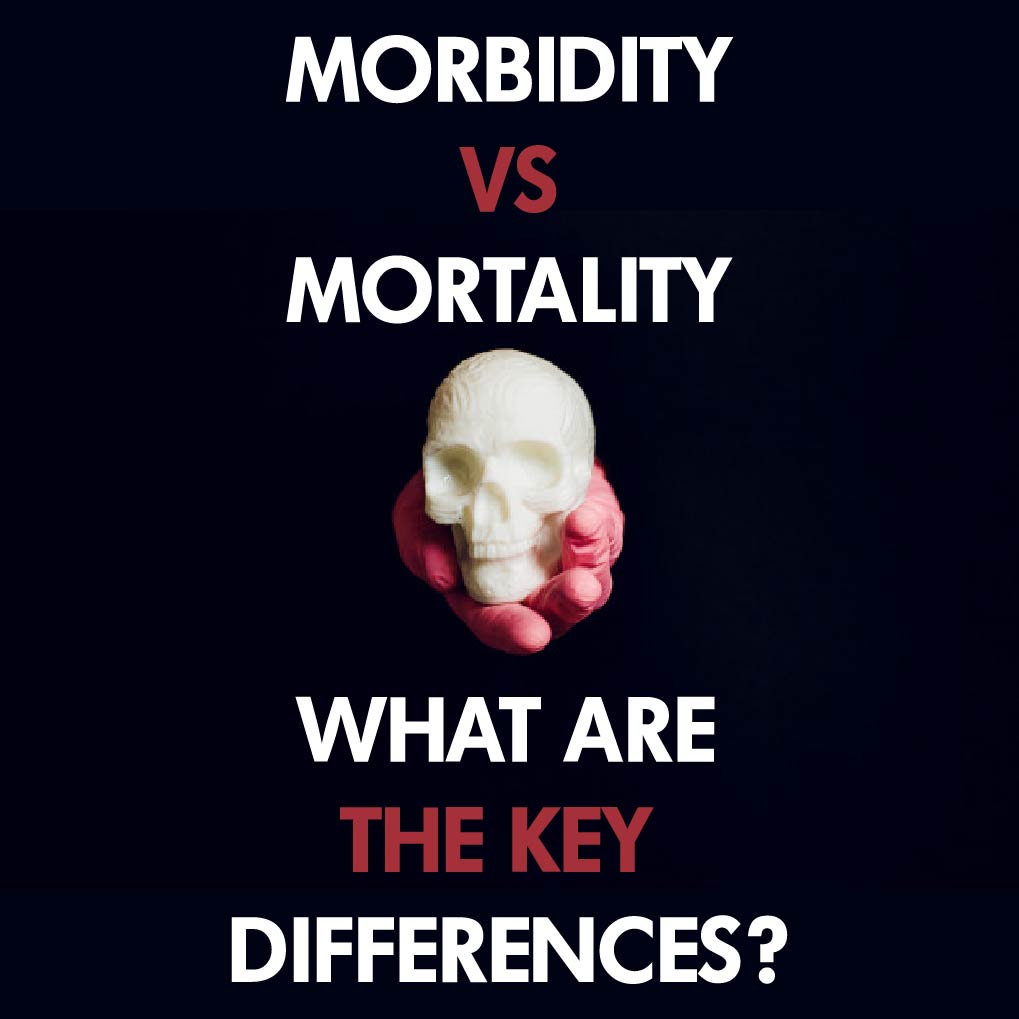Table of Contents
Want to know about Morbidity vs Mortality in Detail, follow this article. As we walk through the COVID-19 pandemic, you may have found 2 terms: morbidity and mortality. These relevant words are generally used in the field of epidemiology.
Morbidity and mortality represent the severity and frequency of particular illnesses or conditions. There is often ambiguity between morbidity and mortality, so this article will help clarify the variation between them, along with some instances of every term.
Morbidity
Morbidity is any psychological or physical state deemed to be outside the domain of normal well-being. The word is often used to define impairment, illness, or degradation of health.
In addition, the larger a person’s morbidity, the lower the normal lifespan as opposed to healthy individuals. However, morbidity does not certainly mean that your ill-health is quickly life-threatening. Over time, if an illness grows it may enhance your risk of mortality.
A few instances of general morbidities has:
- high blood pressure (hypertension)
- stroke
- cancer
- diabetes
- heart disease
- mental health diseases, like anxiety and depression
- lung diseases, like chronic obstructive pulmonary disorder (COPD) and asthma
- obesity
- chronic kidney disease
- viruses, such as the flu, HIV, and COVID-19,
- Alzheimer’s illness
Incidence
Incidence leads to the appearance of new cases of a disease or condition in a population over a specified period of time. It can be displayed as a proportion or a rate.
Proportion
An incidence proportion can be utilized to determine the risk of developing a particular condition during a given time period. It is estimated by dividing the number of fresh cases during a particular period by the population at the beginning of the period.
For instance, let’s say that ten people became sick with food poisoning after eating undercooked chicken at a yard barbecue. If 40 people visiting the barbecue ate the chicken, the chance of food poisoning would be 25%.
Rate
The incident rate is the total sum of fresh cases of a disease within an at-risk population. This helps conclude how fast a virus is spreading. It is often stated in units of population, like per 1,000 people.
For instance, suppose you are considering a population of 800,000 people at risk for receiving hepatitis C. After a year, you observe that 500 of those people have tested positive for the illness.
To determine the incident rate, you have to divide the 500 cases by the population of 800,000. Then you can assume that the incident rate of hepatitis C is 62.5 cases or 0.000625 per 100,000 people per year in this population.
Prevalence
Prevalence is the proportion of a population that has a disease or disorder. Unlike incidence, it covers both fresh and being cases. It can either be measured at a particular point in time or over a detailed period of time.
Prevalence is often represented as a percentage. Population units, like per 100,000 people, can also be accepted.

More than one morbidity is possible?
You may have also heard a word that is like morbidity. It is termed comorbidity. It indicates that you own more than one disease or condition (morbidity) at the very time.
Depending on the situation, a few comorbidities may be more obvious than others. For instance, according to the CDC (Centers for Disease Control and Prevention) trusted source, the disease is often linked with other comorbid situations like heart disease and obesity.
Identifying whether you possess comorbidities can be very significant in a healthcare setting. That’s because they can make a variance in the treatment, diagnosis, and outlook of a disease.
COVID-19 is a big popular instance of this. If you have specific health diseases (comorbidities) and you also receive COVID-19, the danger of a serious disease rises. Some instances of these comorbidities include:
- COPD
- chronic kidney disease
- coronary artery disease
- obesity
- heart failure
- type 2 diabetes
Recognizing if someone who is tested positive for COVID-19 also has one of these situations, can make it simpler for healthcare individuals to form a suitable treatment plan in an try to stop critical illness.
Mortality
Mortality belongs to the number of deaths that have happened due to a particular illness or disease. Mortality is often represented in the form of mortality rate. This is the figure of deaths due to a disease divided by the entire population at that time.
As with morbidity, the mortality rate is usually represented in population units, typically as per 100,000 people. Let’s have a look at an easy example- In one year, 50 heart attack deaths happened within a population of 40,000. To find the mortality rate, you have to divide 50 by 40,000 and then multiply by 100,000. In this society, the mortality rate from a heart attack would be 125/100,000 people for the year.
Excess Mortality
Usually speaking, the figure of deaths continues relatively constant in diverse populations from year to year. However, deaths can grow when events such as illness outbreaks, natural disasters, or wars happen.
Easily put, excess mortality is a ratio of the number of presumed deaths versus the number of deaths that truly happened.
COVID-19 is currently a matter of excess mortality throughout the globe. Fresh research trusted source discovered that deaths in the US grew by 20 percent in the period crossing March through July of 2020. COVID-19 was the basis of 67% of these deaths.
The researchers speculate that the unused excess deaths could be due to unrecognized COVID-19 or to other disorders produced by the pandemic, like interrupted access to proper healthcare.
Conclusion
Morbidity and mortality are 2 phrases that are usually used in epidemiology. While they are relevant, they relate to separate things. Morbidity and mortality are usually expressed as a proportion or rate.
Morbidity is when you have a particular illness or disorder. Some instances of common morbidities are heart disease, diabetes, and obesity. You can own more than one morbidity at the same time. When this happens, it’s called comorbidity.
Mortality is the number of deaths due to a specific disease or condition. Typical crises of mortality in the US are heart illness, cancer, and accidental injuries. In the year 2020, COVID-19 will also be a notable element of mortality.

